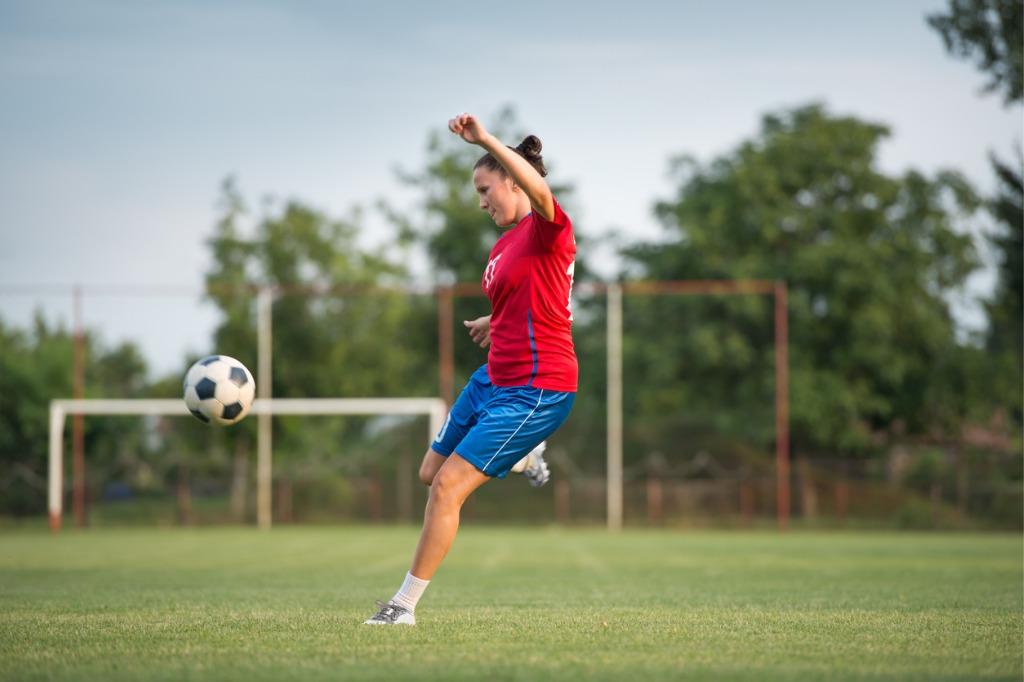Dancer’s Hip: What It Is and How It’s Treated
Have you ever noticed a snapping or popping sound coming from your hip, especially when you walk, stand up, or swing your leg? If so, you may have experienced what’s commonly known as dancer’s hip. While it’s especially common among ballet dancers (hence the name), this condition can affect athletes, fitness enthusiasts, and even people who spend a lot of time sitting.
In most cases, dancer’s hip is harmless and more annoying than painful. But for some, it can lead to discomfort, reduced range of motion, and even joint damage if left untreated.

What Is Dancer’s Hip?
Dancer’s hip, also known as snapping hip syndrome, is a condition in which you feel or hear a “snap” when moving your hip joint. This sensation happens when a muscle, tendon, or other soft tissue in your hip moves over a bony structure.
The snapping can occur in the front, side, or even inside the hip joint, and depending on the cause, it may be painless or accompanied by discomfort. In dancers, repetitive hip movements, especially those involving high kicks, leg swings, or deep bends, make this condition more common.
Types of Dancer’s Hip
The snapping sensation associated with dancer’s hip can come from different areas of the hip. The three main types are:
1. External
- Caused by the iliotibial (IT) band or the gluteus maximus tendon snapping over the outside of the thigh bone (greater trochanter)
- Often felt on the outer side of the hip
- More noticeable when the hip moves from a bent position to straight, such as when standing up from a chair
2. Internal
- Caused by the iliopsoas tendon (a hip flexor) snapping over the front of the hip joint
- Usually felt in the groin area
- Common during activities involving high hip flexion, like kicking or bringing the knee toward the chest
3. Intra-articular
- Caused by a problem inside the hip joint itself, such as a labral tear or loose cartilage
- May be accompanied by catching, locking, or deep joint pain
- Less common, but typically more serious and requires prompt medical evaluation
Common Causes
Dancer’s hip develops when repetitive hip movements cause tendons or muscles to rub over bone, creating that snapping sensation.
Some causes and contributing factors include:
- Repetitive movements from dancing, running, cycling, or martial arts
- Tight muscles in the hip flexors, hamstrings, or IT band
- Muscle imbalances between the hip flexors, glutes, and core muscles
- Poor movement mechanics or posture during activity
- Previous hip injuries that alter how the hip moves
While dancers and athletes are most at risk, anyone can develop dancer’s hip, especially those with tight hips from prolonged sitting or inactivity.
Symptoms of Dancer’s Hip
While the hallmark symptom is the audible or palpable “snap” in the hip during movement, other symptoms may include:
- A visible or audible popping sound when moving the hip
- A snapping sensation that can be felt with your hand over the hip
- Mild discomfort or soreness after activity
- Tightness in the hip or groin area
- In some cases, pain that worsens with activity and improves with rest
If the snapping is painless, it’s often more of an annoyance than a medical problem. However, if pain develops, it’s time to address the underlying cause.
How Is Dancer’s Hip Diagnosed?
At Motion Orthopaedics, diagnosing dancer’s hip begins with a thorough evaluation. Your orthopedic specialist will:
- Review your symptoms and activity history to understand when and how the snapping occurs.
- Perform a physical exam to feel and listen for the snapping during hip movement.
- Assess muscle flexibility and strength to identify imbalances.
- Use imaging tests (X-ray, MRI, or ultrasound) if needed to rule out labral tears, hip impingement, or other structural issues.
A precise diagnosis is key to determining whether the condition can be resolved with conservative treatment or if more advanced care is needed.
Treatment Options
The good news is that most cases of dancer’s hip, especially those without significant pain, can be treated successfully without surgery.
Rest and Activity Modification
- Limit activities that trigger the snapping to allow irritation to subside.
- Modify your training or practice to avoid repetitive high-impact movements.
Stretching and Flexibility Work
- Stretching the hip flexors, hamstrings, and IT band can reduce friction around the hip joint.
- Incorporate dynamic warm-ups before activity and static stretches after.
Strengthening Exercises
- Target the glutes, hip abductors, and core to improve hip stability.
- A physical therapist can provide a tailored strengthening plan.
Physical Therapy
- Helps correct muscle imbalances, improve movement mechanics, and prevent recurrence.
- May include manual therapy, mobility drills, and neuromuscular retraining.
Anti-inflammatory Medications
- Over-the-counter NSAIDs can help reduce pain and inflammation during flare-ups.
Cortisone Injections
- For cases with persistent inflammation, cortisone injections may be considered for pain relief.
Surgical Intervention
- Reserved for cases caused by structural abnormalities, labral tears, or severe tendon irritation that don’t improve with conservative care.
- Procedures may involve repairing a labral tear or releasing a tendon to prevent snapping.
Prevention Strategies
Even if you’ve recovered from dancer’s hip, taking preventive steps can help avoid future issues:
- Warm up before activity to prepare muscles and joints.
- Incorporate hip mobility drills into your regular training.
- Strengthen your glutes and core to stabilize your hips.
- Vary your training routine to avoid overuse of the same muscles.
- Address early signs of snapping or tightness before they become painful.
When to See an Orthopedic Specialist
If your dancer’s hip is painful, limiting your mobility, or interfering with your activities, it’s time to get evaluated. Early treatment can prevent further irritation, reduce downtime, and keep you doing the activities you love.
At Motion Orthopaedics, our specialists understand the unique demands of dancers, athletes, and active individuals. We’ll pinpoint the cause of your snapping hip and create a personalized treatment plan to get you moving smoothly again.
Meet Our Hip Specialists
- David J. King, MD, is a board-certified orthopedic surgeon specializing in hip pain as well as knee, shoulder, elbow and ankle injuries. Click here to learn more about Dr. King.
- Scott W. Zehnder, MD, is a board-certified orthopedic surgeon who is fellowship trained in orthopedic sports medicine. Click here to learn more about Dr. Zehnder.
Get Back in Rhythm with Motion Orthopaedics
Dancer’s hip doesn’t have to keep you from dancing, training, or staying active. Whether you’re dealing with mild snapping or painful hip irritation, Motion Orthopaedics is here to help.
Contact us today to schedule an appointment and take the first step toward lasting relief from hip pain.




